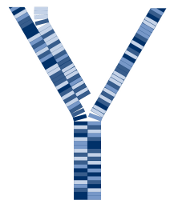Team:Yale
From 2012.igem.org
(Prototype team page) |
DrJones1935 (Talk | contribs) |
||
| Line 1: | Line 1: | ||
| - | |||
| - | |||
| - | |||
| - | |||
| - | |||
| - | |||
| - | |||
| - | |||
| - | |||
| - | |||
| - | |||
| - | |||
| - | |||
| - | |||
| - | |||
| - | |||
| - | |||
| - | |||
| - | |||
| - | |||
{|align="justify" | {|align="justify" | ||
|You can write a background of your team here. Give us a background of your team, the members, etc. Or tell us more about something of your choosing. | |You can write a background of your team here. Give us a background of your team, the members, etc. Or tell us more about something of your choosing. | ||
| Line 24: | Line 4: | ||
|- | |- | ||
| | | | ||
| - | '' | + | |
| + | ==Projects== | ||
| + | |||
| + | The Yale 2012 iGEM Team is currently pursuing three related projects: | ||
| + | |||
| + | '''1. Understanding structure and function of RiAFP:''' | ||
| + | In an effort to fulfill the iGEM competition BioBrick requirement, we are continuing our work with the hyperactive ''Rhagium inquisitor'' antifreeze protein. This summer we will gain insight about the critical features of RiAFP structure via systematic alteration of the protein's amino acid sequence by site-directed mutagenesis and MAGE (see below). With this knowledge, we hope to design several RiAFP variants with enhanced properties. We will also develop simulations of the molecular dynamics of this protein. | ||
| + | |||
| + | '''2. MAGE in a naturally competent organism:''' | ||
| + | Multiplex Automated Genome Engineering (MAGE), a technique for rapidly generating genomic diversity using the recombination ability of the λ-phage ssDNA-binding protein β, has to date been introduced only in E. coli. These cells must be transformed via electroporation for each MAGE cycle to facilitate efficient uptake of mutagenic oligonucleotides, but this process kills a significant portion of otherwise viable cells. We aim to introduce MAGE in naturally competent bacteria such as ''B. subtilis'' and ''A. baylyi'' by testing homologs of β and uniquely optimizing the technique within each species to avoid the death/recovery time inherent with electroporation. In addition, we are developing CAD-MAGE to predict the diversity produced by MAGE. | ||
| + | |||
| + | '''3. MAGE on a chip:''' | ||
| + | The goal of the microfluidic portion of iGEM's work is to fabricate a microfluidic device that can carry out the four steps of the MAGE process: incubation, expression, filtration, and electroporation. We will keep our device design simple, using only standard soft-lithography techniques and forgoing valves, while preserving the ability to precisely control the parameters of the MAGE process. Ultimately, we hope that this design will allow us to easily construct arrays of MAGE devices in a single microfluidic chip. | ||
| + | |||
| + | |||
|[[Image:Yale_team.png|right|frame|Your team picture]] | |[[Image:Yale_team.png|right|frame|Your team picture]] | ||
|- | |- | ||
Revision as of 14:49, 15 July 2012
| You can write a background of your team here. Give us a background of your team, the members, etc. Or tell us more about something of your choosing. | |
ProjectsThe Yale 2012 iGEM Team is currently pursuing three related projects: 1. Understanding structure and function of RiAFP: In an effort to fulfill the iGEM competition BioBrick requirement, we are continuing our work with the hyperactive Rhagium inquisitor antifreeze protein. This summer we will gain insight about the critical features of RiAFP structure via systematic alteration of the protein's amino acid sequence by site-directed mutagenesis and MAGE (see below). With this knowledge, we hope to design several RiAFP variants with enhanced properties. We will also develop simulations of the molecular dynamics of this protein. 2. MAGE in a naturally competent organism: Multiplex Automated Genome Engineering (MAGE), a technique for rapidly generating genomic diversity using the recombination ability of the λ-phage ssDNA-binding protein β, has to date been introduced only in E. coli. These cells must be transformed via electroporation for each MAGE cycle to facilitate efficient uptake of mutagenic oligonucleotides, but this process kills a significant portion of otherwise viable cells. We aim to introduce MAGE in naturally competent bacteria such as B. subtilis and A. baylyi by testing homologs of β and uniquely optimizing the technique within each species to avoid the death/recovery time inherent with electroporation. In addition, we are developing CAD-MAGE to predict the diversity produced by MAGE. 3. MAGE on a chip: The goal of the microfluidic portion of iGEM's work is to fabricate a microfluidic device that can carry out the four steps of the MAGE process: incubation, expression, filtration, and electroporation. We will keep our device design simple, using only standard soft-lithography techniques and forgoing valves, while preserving the ability to precisely control the parameters of the MAGE process. Ultimately, we hope that this design will allow us to easily construct arrays of MAGE devices in a single microfluidic chip.
| |
| Team Yale |
| Home | Team | Official Team Profile | Project | Parts Submitted to the Registry | Modeling | Notebook | Safety | Attributions |
|---|
 "
"

